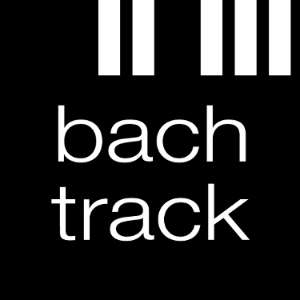When the London Symphony Orchestra’s new Music Director took up his post, the imprimatur “This is Rattle” was everywhere: billboards on the Tube, web banners and full-page newspaper adverts. As he unveils his fourth season, the energy that Sir Simon Rattle has injected into his orchestra is still palpable. And so are some of the trends and traditions he introduced, such as an opening concert featuring British composers (including a world premiere) and the Half Six Fix, a shorter, rush hour concert with an earlier finish time.
Rattle now introduces a theme for concerts over the next two seasons under the title “Dancing on the Edge of a Volcano”. Giving a speech to The League of Nations in September 1929, German Foreign Minister Gustav Stresemann described the Weimar Republic’s precarious economic position as “dancing on a volcano”, a phrase echoed by composer Alban Berg in a letter of 1933. The LSO’s series explores how composers in the 20th century reacted to wider political events and anxieties. Cue plenty of Berg, Webern and Shostakovich next season, as well as composers such as Rachmaninov and Bartók who fled to America. Rachmaninov’s Third Symphony and Symphonic Dances and Bartók’s Third Piano Concerto were composed in the US and form part of the line-up.
After his all-British starter, featuring the world premiere of Mark-Anthony Turnage’s Last Song for Illy, Berg’s Wozzeck leads the charge early in the season. A pair of concert performances features largely the same cast under Rattle that will have performed the opera in Simon McBurney’s production at this summer’s Festival d’Aix-en-Provence. Christian Gerhaher is an experienced exponent of the title role, the downtrodden soldier of Georg Büchner’s source stage play. He is joined by Anja Kampe, as his wife Marie, and Sir John Tomlinson who reprises his familiar role of the manipulative Doctor.
There’s more opera from Rattle with a performance of Act 2 of Wagner’s Tristan und Isolde, with a great cast led by Stuart Skelton and Nina Stemme, who sang the opera together in Mariusz Treliński’s production at The Metropolitan Opera – also conducted by Rattle – in 2016. And for those of you missing the outer acts, Rattle programmes the Prelude and Liebestod in an earlier concert, alongside Webern and Brahms.
After this year’s Christ on the Mount of Olives – the surprise package of the 250th anniversary thus far – the Beethoven celebrations continue in rather more conventional style. Krystian Zimerman has enjoyed a long association with Rattle and together they perform the five piano concertos, juxtaposing them with the music of Paul Hindemith in three programmes before tackling all five concertos in a single marathon sitting.
Rattle conducts Elgar’s The Dream of Gerontius (a work he last conducted in London at the 2015 Proms with the Vienna Philharmonic) with a cast led by Skelton and Alice Coote. Elsewhere, Rattle is reviving repertoire he’s performed with the LSO in recent seasons: Mahler’s Sixth Symphony (2017), Haydn’s Symphony no. 86 (2019 European tour) and the triple bill of Stravinsky ballets from the first weeks of his tenure as music director. Dvořák’s tone poem The Golden Spinning Wheel is another Sir Simon speciality.
The LSO Principal Guest Conductors pick up familiar programming threads. Gianandrea Noseda continues his Shostakovich symphony cycle – now there’s a composer whose relationship with the Soviet authorities very much danced on the edge of a volcano. Noseda conducts the Eleventh, depicting the events of the Russian Revolution of 1905, as well as the Thirteenth. The latter sets poems by Yevgeny Yevtushenko – such a dangerous proposition that Shostakovich’s usual collaborator, Yevgeny Mravinsky, declined to conduct. Noseda also delves into other Russian symphonic repertoire, including Tchaikovsky’s Pathétique and Prokofiev’s Fifth.
François-Xavier Roth, on the other hand, pairs two very different French composers who nevertheless shared a remarkable ear for colour. Roth’s love for Berlioz is well-known, so it’s no surprise to see Symphonie fantastique on the bill, but at the end of the season he conducts Lélio, planned by the composer as a sequel to the Fantastique. It’s an odd work, written for narrator, solo voices, chorus and an orchestra including piano. Four Varèse feature: Ionisation, Arcana, Intégrales and Ecuatorial, which fuses Mayan rituals with 1930s electronica.
The LSO rightly draws many of the world’s top soloists. Among the star pianists coming for 2020-21 are Alice Sara Ott (Saint-Saëns 2), Seong-Jin Cho (Tchaikovsky 1), Simon Trpceski (Prokofiev 3) and Yuja Wang (Shostakovich 2). Top violinists include Janine Jansen (Britten), Isabelle Faust, Patricia Kopatchinskaja (playing the UK premiere of Francisco Coll’s concerto) and Nicola Benedetti (giving the world premiere of Mark Simpson’s new concerto).
Christian Tetzlaff enjoys an LSO residency next season, including concertos by Elgar, Szymanowski and Shostakovich, as well as four chamber recitals at LSO St Luke’s under the title “Christian Tetzlaff & Friends”.
Click here to view all the London Symphony Orchestra's events at the Barbican next season.
This article was sponsored by the London Symphony Orchestra




